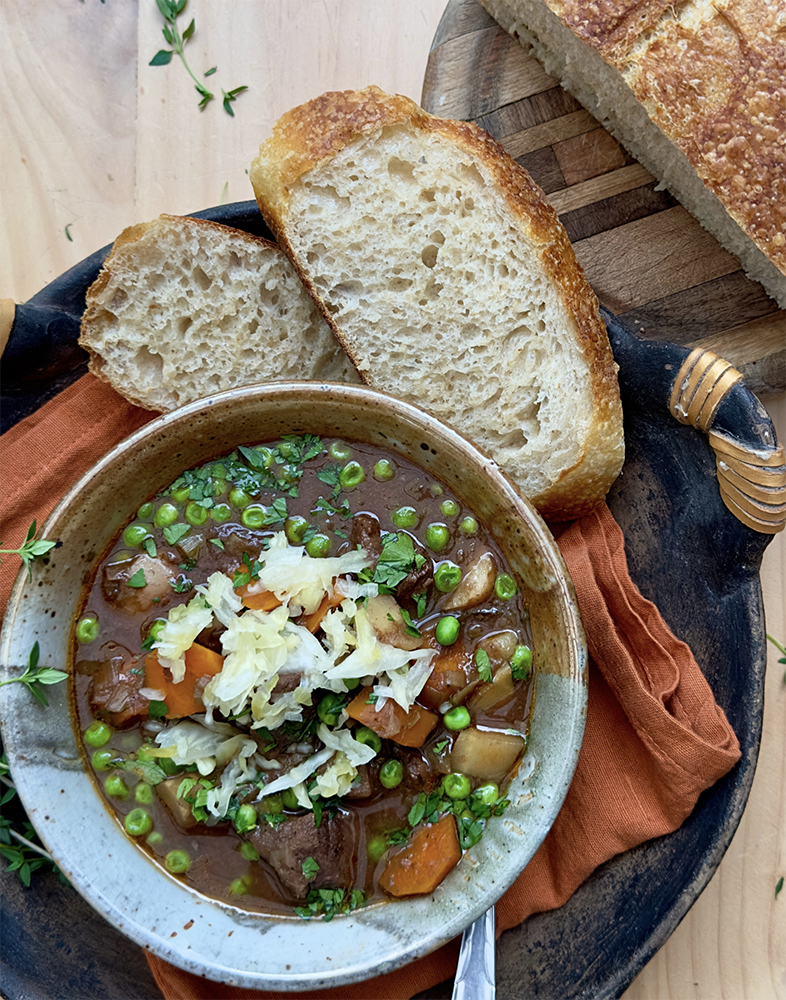 🖨️ Print post
🖨️ Print post
Growing up in Banff National Park in Canada, I was lucky to see some of the last remaining majestic herds of buffalo that once roamed North America. Historically, buffalo would graze an area, then move on when the grass was eaten, leaving the trampled land with natural nutrients from their manure to promote new vegetation. Below the recipe is a photo from the late 1800’s of Buffalo Bill and my great-grandfather after a big hunting trip. While it might be difficult to find buffalo meat, try to find the closest thing, pastured beef.
Ingredients
- 2 pounds of stew beef or buffalo meat cut into bite-sized pieces
- 1 large leek, cut lengthwise and then sliced
- 6 cloves of garlic, minced
- 1 cup dry red wine
- 3 cups beef or buffalo bone broth [see recipe or buy pre-made]
- ¼ cup tomato paste
- 2 teaspoons fresh thyme
- 1 teaspoon fresh rosemary, chopped
- ½ pound of small red potatoes, skin left on and cut in half or quarters
- ½ pound parsnips, peeled and cut into medium chunks
- 3 large carrots, cut into chunks
- Sea salt and pepper, to taste
- 1 cup fresh or frozen peas
- ¼ cup fresh parsley, chopped
Instructions
- Place the meat, leek, garlic, wine, broth, tomato paste, thyme and rosemary in a crock pot/slow cooker.
- Stir all the ingredients together and put on low for 8 to 10 hours.
- I like to add the potatoes, parsnips and carrots half way through the cooking time so they are not overcooked. You can add them at the beginning if you will not be at home to do that. You can also add them just before serving if you steam them in a little water first.
- Five minutes before serving add the salt, pepper peas and parsley.
- Top with fresh parsley and or sauerkraut

Photo above: My Great Grandfather (far right) with Buffalo Bill ( 4th from right) in the late 1800’s

Photo above: Artist rendition of above photo with Buffalo Bill riding a horse
🖨️ Print post

Thanks for sharing this recipe. WAPF has been an integral part of my switch to traditional foods like this stew.
thank you for this recipe, the really neat historical photo(s), and all that WAPF does.